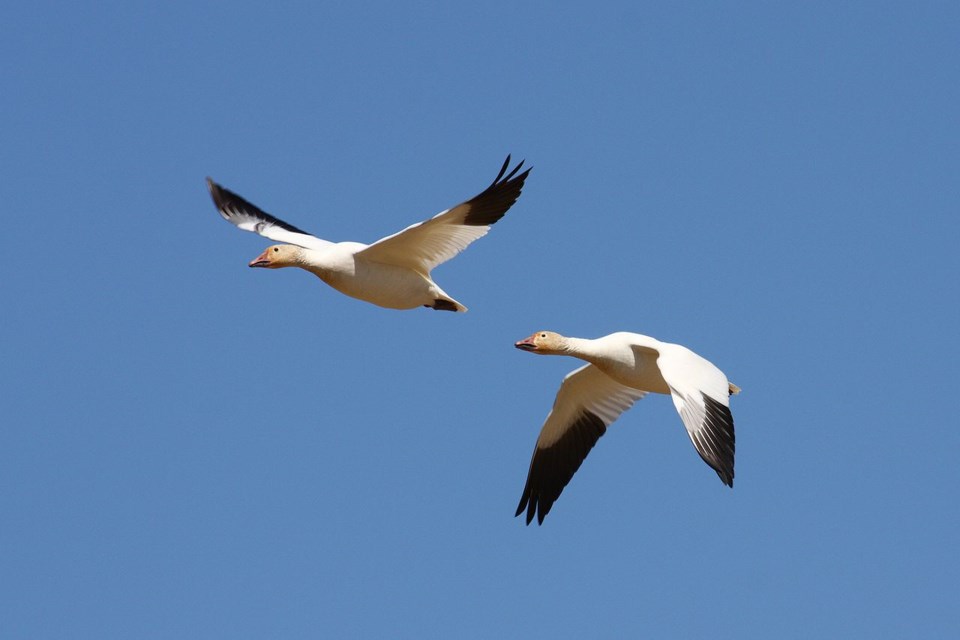When October arrives almost all of our summer resident songbirds have departed, the warblers, thrushes, vireos, etc. Seed-eating birds such as the sparrows are still moving to their winter quarters, some species leaving the Sunshine Coast and others arriving. Up in the mountains the largely unseen migration of the raptorial birds is underway. Thousands of waterbirds, the ducks, grebes and loons will arrive on the Salish Sea, and October is the month when the snow geese fly overhead. That is the broad picture of what is happening in our area.
On Sept. 28 a hawk watch held by the Sunshine Coast Natural History Society from a clearcut at about 9K on the Wilson Creek FSR observed eight species of raptors. The total numbers were low but the diversity high. Species observed were sharp-shinned and Cooper’s hawks, merlin and kestrel, red-tailed hawk, northern harrier, turkey vulture and bald eagle. Additionally, a pygmy owl was heard calling. This raptor migration takes place along ridges in the mountains as the birds utilize the thermal currents generated by the elevation, and reduce their energetics on long migrational flights. The flight will persist for the next 2-3 weeks. The number of birds is very variable depending on a host of factors, mainly the weather.
Bald eagles are almost totally absent from the Sunshine Coast in September as they move north to wherever the salmon are running. During October they gradually filter back to our area.
The snow geese are coming! During October many thousands will overfly the Sunshine Coast as they migrate from their only breeding location on Wrangell Island in Siberia, to the Fraser Delta and Skagit lowlands of Washington. Numbers vary, dependent upon the success of the breeding season in Siberia. The peak window is Oct. 10-20 but birds might be seen on any date in October, again dependent upon the weather. Listen for the flocks overhead and if the birds are white with black wingtips then you are seeing the snow geese.
Robins have been much in evidence for the last two weeks. They are now gathered into flocks of up to 100 birds and are gorging on the berries of arbutus, dogwood, laurel, mountain ash and crabapple. Dark-eyed juncos are back in the lowlands after a summer up in the mountains. This is one of the commonest birds on the Sunshine Coast in winter and is frequent at bird feeders.
John Hodges located and photographed a lark sparrow in Wilson Creek on Sept. 27. This species breeds in the Okanagan and rarely wanders to the coast.
To report your sightings or questions contact [email protected] or 885-5539. Good Birding.



